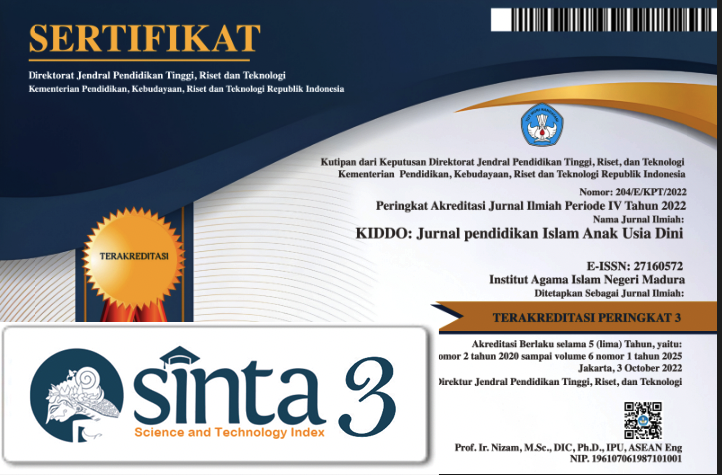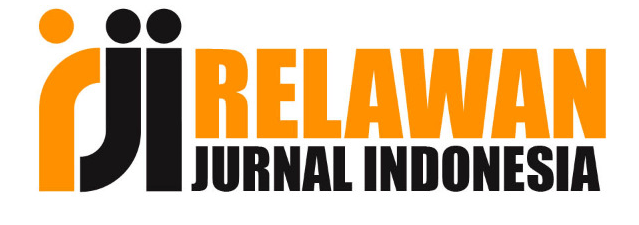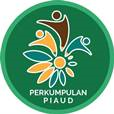The Correlation Between Parental Awareness and Concern to The Early Childhoods' Digital Safety
 Abstract views: 513
,
Abstract views: 513
,
 PDF downloads: 290
PDF downloads: 290
Abstract
Penelitian ini bertujuan untuk mengukur tingkat kesadaran orang tua terhadap keamanan digital dan tingkat kekhawatiran orang tua terhadap risiko keamanan digital pada anak usia dini. Metode penelitian yang digunakan adalah desain survei cross-sectional. Instrumen yang digunakan adalah kuesioner yang disebarkan secara online. Sebanyak 60 orang tua yang memiliki anak usia 4-6 tahun dilibatkan sebagai responden. Data yang diperoleh dari kuesioner dianalisis menggunakan statistik deskriptif dan Korelasi Rank Spearman. Hasil penelitian menunjukkan bahwa: 1) tingkat kesadaran keamanan digital orang tua dikategorikan sangat tinggi pada ergonomi penggunaan teknologi digital (4,59), kredibilitas informasi online (4,82), periklanan online (4,83), kontak dengan orang asing (4,85) , penggunaan password (4.9), dan perlindungan dari virus (4.74); 2) orang tua mempunyai tingkat kepedulian yang sangat tinggi terhadap aspek risiko cyberbullying (4,77), konten seksual (4,89), privasi data (4,87), dan interaksi dengan orang asing (4,75); 3) umur dan tingkat pendidikan orang tua bukan merupakan prediktor; 4) hubungan tingkat kesadaran keamanan digital dengan kepedulian orang tua adalah kuat dan positif (0,664). Artinya, terdapat hubungan yang kuat antara kesadaran dan kekhawatiran orang tua terhadap keamanan digital anak mereka. Keterbatasan penelitian ini adalah ukuran sampel yang kecil dan bias gender.
Downloads
References
Altun, D. (2019). An investigation of preschool children’s digital footprints and screen times, and of parents’ sharenting and digital parenting roles. International Journal of Eurasia Social Sciences, 10(35), 76–97. https://hdl.handle.net/11511/81129
Asmawati, L. (2021). Peran orang tua dalam pemanfaatan teknologi digital pada anak usia dini. Jurnal Obsesi : Jurnal Pendidikan Anak Usia Dini, 6(1), 82–96. https://doi.org/10.31004/obsesi.v6i1.1170
Atmojo, A. M., Sakina, R. L., & Wantini, W. (2021). Permasalahan pola asuh dalam mendidik anak di era digital. Jurnal Obsesi : Jurnal Pendidikan Anak Usia Dini, 6(3), 1965–1975. https://doi.org/10.31004/obsesi.v6i3.1721
Boyd, D., & Hargittai, E. (2013). Connected and concerned: Variation in parents’ online safety concerns. Policy and Internet, 5(3), 245–269. https://doi.org/10.1002/1944-2866.POI332
Cabello-Hutt, T., Cabello, P., & Claro, M. (2018). Online opportunities and risks for children and adolescents: The role of digital skills, age, gender and parental mediation in Brazil. New Media and Society, 20(7), 2411–2431. https://doi.org/10.1177/1461444817724168
Cahyani, A., & Atmaja, K. (2021). The role of parents in monitoring the negative impacts of gadget usage for early childhood during covid-19 pandemic era. International Joint Conference on Arts and Humanities: Advances in Social Science, Education and Humanities Research, 618, 110–1116. http://creativecommons.org/licenses/by-nc/4.0/
Chotimah, S. C., & Harun, H. (2022). Mitigasi resiko gadget melalui pendampingan orang tua pada masa pandemi covid-19. Jurnal Obsesi : Jurnal Pendidikan Anak Usia Dini, 6(4), 2483–2494. https://doi.org/10.31004/obsesi.v6i4.2168
Creswell, J. W. (2016). Research design: Pendekatan metode kualitatif, kuantitatif, dan campuran (4th ed). Pustaka Pelajar.
Davis, V. (2012). Interconnected but underprotected? Parents’ methods and motivations for information seeking on digital safety issues. Cyberpsychology, Behavior, and Social Networking, 15(12), 669–674. https://doi.org/10.1089/cyber.2012.0179
de Bruijn, H., & Janssen, M. (2017). Building cybersecurity awareness: The need for evidence-based framing strategies. Government Information Quarterly, 34(1), 1–7. https://doi.org/10.1016/j.giq.2017.02.007
Dedkova, L., Smahel, D., & Just, M. (2022). Digital security in families: the sources of information relate to the active mediation of internet safety and parental internet skills. Behaviour and Information Technology, 41(5), 1052–1064. https://doi.org/10.1080/0144929X.2020.1851769
Dias, P., & Brito, R. (2021). Criteria for selecting apps: Debating the perceptions of young children, parents and industry stakeholders. Computers and Education, 165. https://doi.org/10.1016/j.compedu.2021.104134
Dias, P., Brito, R., Ribbens, W., Daniela, L., Rubene, Z., Dreier, M., Gemo, M., Di Gioia, R., & Chaudron, S. (2016). The role of parents in the engagement of young children with digital technologies: Exploring tensions between rights of access and protection, from ‘Gatekeepers’ to ‘Scaffolders.’ Global Studies of Childhood, 6(4), 414–427. https://doi.org/10.1177/2043610616676024
Dodel, M., & Mesch, G. (2019). An integrated model for assessing cyber-safety behaviors: How cognitive, socioeconomic and digital determinants affect diverse safety practices. Computers and Security, 86, 75–91. https://doi.org/10.1016/j.cose.2019.05.023
Durak, A., & Kaygin, H. (2020). Parental mediation of young children’s internet use: Adaptation of parental mediation scale and review of parental mediation based on the demographic variables and digital data security awareness. Education and Information Technologies, 25(3), 2275–2296. https://doi.org/10.1007/s10639-019-10079-1
Fatokun, F. B., Hamid, S., Norman, A., & Fatokun, J. O. (2019). The impact of age, gender, and educational level on the cybersecurity behaviors of tertiary institution students: An empirical investigation on Malaysian Universities. Journal of Physics: Conference Series, 1339(1). https://doi.org/10.1088/1742-6596/1339/1/012098
Göldağ, B. (2021). Investigation of the relationship between digital literacy levels and digital data security awareness levels of university students. E-International Journal of Educational Research, 12(3), 82–100. https://doi.org/10.19160/e-ijer.950635
Greyson, D., Chabot, C., Mniszak, C., & Shoveller, J. A. (2023). Social media and online safety practices of young parents. Journal of Information Science, 49(5), 1344–1357. https://doi.org/10.1177/01655515211053808
Hermawan, R. (2019). Penerapan aplikasi parental control screen time dalam penggunaan smarthphone bagi anak-anak. SAP (Susunan Artikel Pendidikan), 4(1), 66–74.
Jang, Y., & Ko, B. (2023). Online safety for children and youth under the 4Cs framework—A focus on digital policies in Australia, Canada, and the UK. Children, 10(8). https://doi.org/10.3390/children10081415
Jusienė, R., Urbonas, V., Laurinaitytė, I., Rakickienė, L., Breidokienė, R., Kuzminskaitė, M., & Praninskienė, R. (2019). Screen use during meals among young children: Exploration of associated variables. Medicina (Lithuania), 55(10). https://doi.org/10.3390/medicina55100688
Kopecký, K., Szotkowski, R., Krejčí, V., & Gómez-García, G. (2022). Digital safety and its importance in teacher education. Analysis of children’s online behaviour in the Czech and polish context. Revista Interuniversitaria de Formacion Del Profesorado, 98(362), 79–92. https://doi.org/10.47553/rifop.v98i36.2.94062
Ktoridou, D., Eteokleous, N., & Zahariadou, A. (2012). Exploring parents’ and children’s awareness on internet threats in relation to internet safety. Campus-Wide Information Systems, 29(3), 133–143. https://doi.org/10.1108/10650741211243157
Livingstone, S., Ólafsson, K., Helsper, E. J., Lupiáñez-Villanueva, F., Veltri, G. A., & Folkvord, F. (2017). Maximizing opportunities and minimizing risks for children online: The role of digital skills in emerging strategies of parental mediation. Journal of Communication, 67(1), 82–105. https://doi.org/10.1111/jcom.12277
Martin, F., Bacak, J., Polly, D., Wang, W., & Ahlgrim-Delzell, L. (2023a). Teacher and school concerns and actions on elementary school children digital safety. TechTrends, 67(3), 561–571. https://doi.org/10.1007/s11528-022-00803-z
Martin, F., Bacak, J., Polly, D., Wang, W., & Ahlgrim-Delzell, L. (2023b). Teacher and school concerns and actions on elementary school children digital safety. TechTrends, 67(3), 561–571. https://doi.org/10.1007/s11528-022-00803-z
Martin, F., Gezer, T., Anderson, J., Polly, D., & Wang, W. C. (2021). Examining parents perception on elementary school children digital safety. Educational Media International, 58(1), 60–77. https://doi.org/10.1080/09523987.2021.1908500
Miranti, P., & Putri, L. D. (2021). Waspadai dampak penggunaan gadget terhadap perkembangan sosial anak usia dini. Jurnal Cendekiawan Ilmiah PLS, 6(1), 58–66.
Nugroho, R., Artha, I. K. A. J., Nusantara, W., Cahyani, A. D., & Patrama, M. Y. P. (2022). Peran orang tua dalam mengurangi dampak negatif penggunaan gadget. Jurnal Obsesi : Jurnal Pendidikan Anak Usia Dini, 6(5), 5425–5436. https://doi.org/10.31004/obsesi.v6i5.2980
Nurhayati. (2023). Penggunaan teknologi gadget sebagai media pembelajaran pada anak usia dini di Raudhatul Athfal Al-Ikhlas kota Singkawang. Jurnal Ilmu Pendidikan (JIP), 1(3), 485–500.
OECD. (2021). Children in the digital environment revised typology of risks.
Oktavia, T., Solfiah, Y., & N, Z. (2022). Hubungan screen time dengan kemampuan sosial anak 5-6 Tahun di TK kelurahan Sukaramai Pekanbaru. Jurnal Pendidikan Dan Konseling, 4(6), 12472–12481.
Quayyum, F., Cruzes, D. S., & Jaccheri, L. (2021). Cybersecurity awareness for children: A systematic literature review. In International Journal of Child-Computer Interaction (Vol. 30). Elsevier B.V. https://doi.org/10.1016/j.ijcci.2021.100343
Redmond, P., Lock, J. V., & Smart, V. (2018). Pre-service teachers’ perspectives of cyberbullying. Computers and Education, 119, 1–13. https://doi.org/10.1016/j.compedu.2017.12.004
Redmond, P., Lock, J. V., & Smart, V. (2020). Developing a cyberbullying conceptual framework for educators. Technology in Society, 60. https://doi.org/10.1016/j.techsoc.2019.101223
Rode, J. A. (2009). Digital parenting: Designing children’s safety.
Sadri, A. M. (2018). Prolonged digital screen effect on preschool children: An analysis from the perception of parents of Dhaka.
Sapanca, H. F., & Kanbul, S. (2022). Risk management in digitalized educational environments: Teachers’ information security awareness levels. Frontiers in Psychology, 13. https://doi.org/10.3389/fpsyg.2022.986561
Stoilova, M., Bulger, M., & Livingstone, S. (2024). Do parental control tools fulfil family expectations for child protection? A rapid evidence review of the contexts and outcomes of use. Journal of Children and Media, 18(1), 29–49. https://doi.org/10.1080/17482798.2023.2265512
Subardjo, Y. P., Sudargo, T., & Julia, M. (2013). Paparan iklan televisi terhadap pemilihan makanan dan asupan energi pada anak Infl uence of exposure to television ads to food choice and energy intake in children. Jurnal Gizi Klinik Indonesia, 10(2), 101–110.
Sugiyono. (2019). Metode penelitian pendidikan: Kuantitatif, kualitatif, kombinasi, R&D dan penelitian pendidikan. Alfabeta.
Sumarni, N. (2022). Tantangan guru dan orangtua dalam peran digital parenting untuk pengembangan kognitif anak usia dini. Hadlonah : Jurnal Pendidikan Dan Pengasuhan Anak Usia Dini, 3(1), 41–48. http://journal.bungabangsacirebon.ac.id/index.php/hadlonah
Syahidah, Z. A., & Wijayanti, H. S. (2017). Perbedaan aktivitas fisik, screen time, dan persepsi ibu terhadap kegemukan antara balita gemuk dan non gemuk di kota Semarang. Journal of Nutrition College, 6(1), 11–18. http://ejournal-s1.undip.ac.id/index.php/jnc
Tomczyk, Ł. (2019). Digital literacy of primary education teachers in the area of digital safety.
Tomczyk, Ł., & Potyrała, K. (2021). Parents’ knowledge and skills about the risks of the digital world. South African Journal of Education, 41(1). https://doi.org/10.15700/saje.v41n1a1833
Valentine, G., & Holloway, S. (2001). On-line dangers?: Geographies of parents’ fears for children’s safety in cyberspace*. Professional Geographer, 53(1), 71–83.
Vélez, A. P., Olivencia, J. J. L., & Zuazua, I. I. (2017). The Role of Adults in Children Digital Literacy. Procedia - Social and Behavioral Sciences, 237, 887–892. https://doi.org/10.1016/j.sbspro.2017.02.124
Yaman, F., Dönmez, O., Akbulut, Y., Yurdakul, I. K., Çoklar, A. N., & Güyer, T. (2019). Exploration of parents’ digital parenting efficacy through several demographic variables. Egitim ve Bilim, 44(199), 149–172. https://doi.org/10.15390/EB.2019.7897
Zabatiero, J., Straker, L., Mantilla, A., Edwards, S., & Danby, S. (2018). Young children and digital technology: Australian early childhood education and care sector adults’ perspectives. Australasian Journal of Early Childhood, 43(2), 14–22. https://doi.org/10.23965/AJEC.43.2.02
Zaini, M., & Soenarto, S. (2019). Persepsi orangtua terhadap hadirnya era teknologi digital di kalangan anak usia dini. Jurnal Obsesi : Jurnal Pendidikan Anak Usia Dini, 3(1), 254. https://doi.org/10.31004/obsesi.v3i1.127
Zhao, P., Bazarova, N. N., & Valle, N. (2023). Digital parenting divides: The role of parental capital and digital parenting readiness in parental digital mediation. Journal of Computer-Mediated Communication, 28(5). https://doi.org/10.1093/jcmc/zmad032
Copyright (c) 2024 Putri Indah Sari, Ida Rahmawati, Rita Mariyana, Nadiyah Charmeida

This work is licensed under a Creative Commons Attribution 4.0 International License.
-
The journal operates an Open Access policy under a Creative Commons 4.0 International license. The terms of the license are:
Share— copy and redistribute the material in any medium or format
Adapt— remix, transform, and build upon the material for any purpose, even commercially.
1. Authors retain copyright and grant the journal right of first publication with the work simultaneously licensed under a Creative Commons License.that allows others to share the work with an acknowledgement of the work’s authorship and initial publication in this journal
2. Authors are permitted and encouraged to post their work online (e.g., in institutional repositories or on their website) prior to and during the submission process, as it can lead to productive exchanges, as well as earlier and greater citation of published work (See The Effect of Open Access).
Jurnal Kiddo is licensed under a Creative Commons
n Access).














